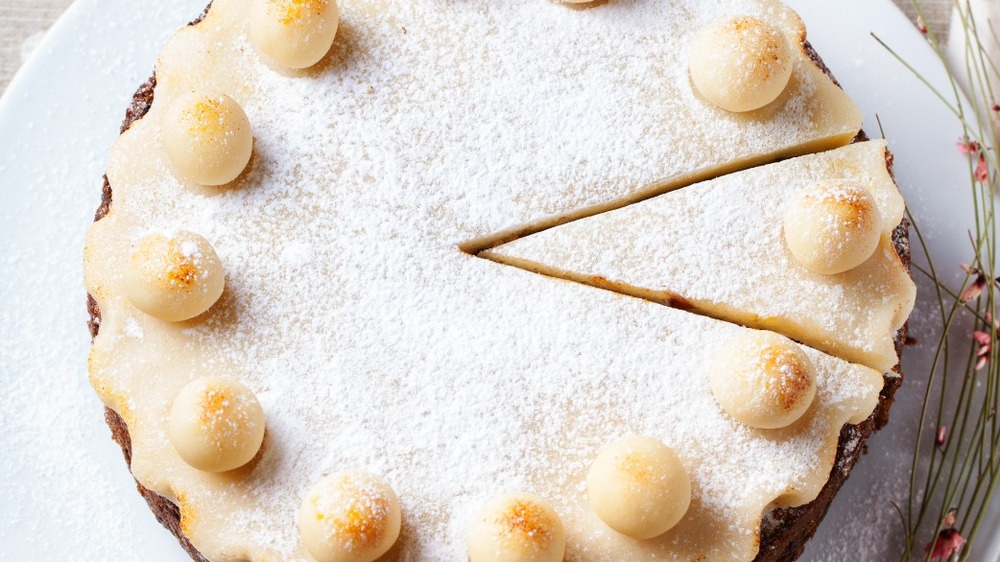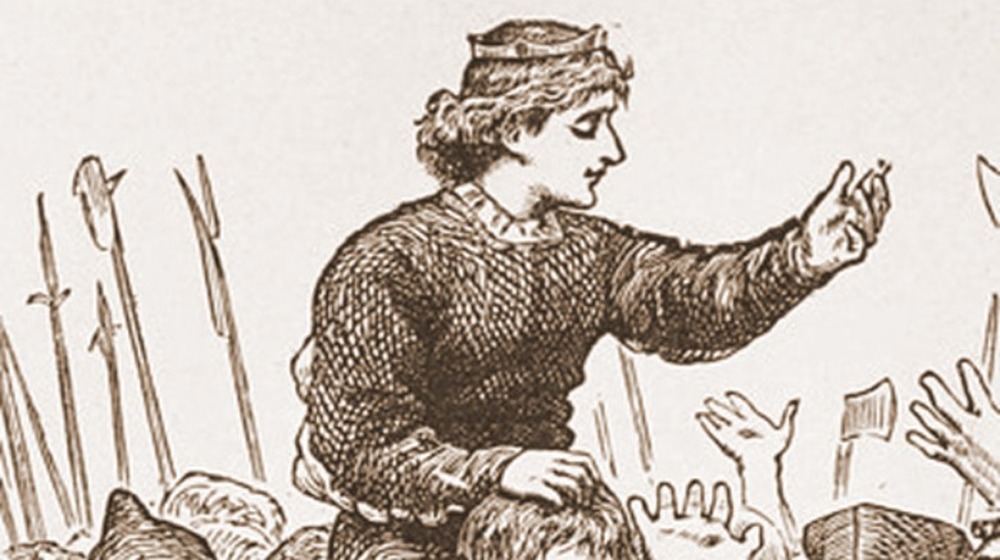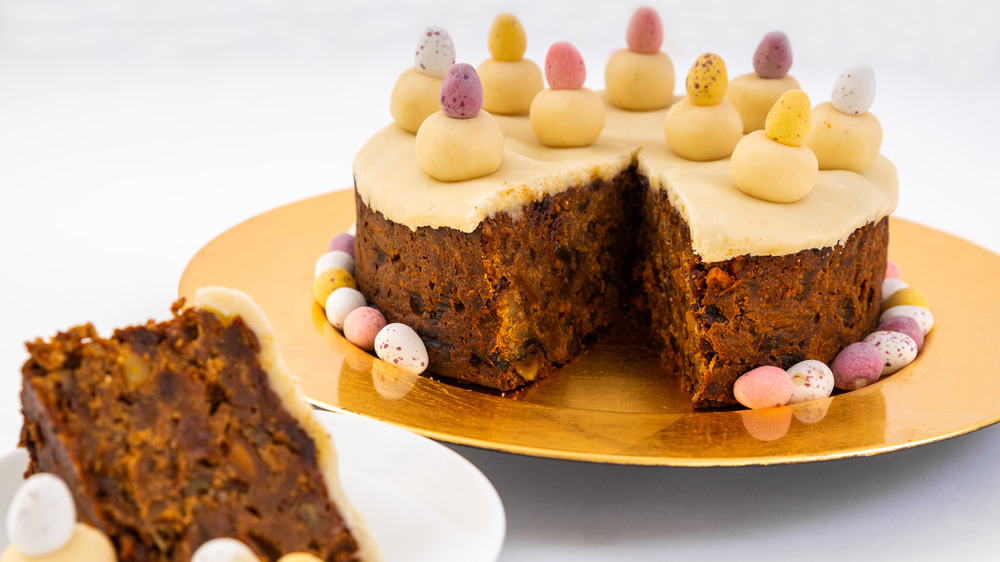What Is Simnel Cake And How Do You Make It?
Simnel cake is one of those quintessentially British holiday dishes, one that's not so well known in the States. Much as mince pies are a part of every Christmas celebration and cranachan is a must-have for Burns Night (at least, north of the Anglo-Scottish border where the latter holiday is celebrated), simnel cake starts popping up in British bakeries right around Easter time.
Originally, however, simnel cake was meant to celebrate a different occasion. Nigella Lawson says it was first associated with Mothering Sunday, which, in addition to being the British version of Mother's Day, is also a religious holiday. BBC Religions says it occurs on the fourth Sunday of Lent each year and has traditionally been a time when British Christians return to worship at their "mother" church, which is the main church or cathedral of their home parish. In honor of the day, Lenten dietary restrictions have long been lifted, making such a decadent cake permissible during this time of fasting.
Simnel cake consists of a fruitcake layered with marzipan or almond paste, and it is easily recognizable due to a unique decoration: 11 marzipan balls on top. Why 11? Because each ball is meant to represent one of Christ's Apostles, but there's no ball for Judas Iscariot because... you know.
How simnel cake (maybe) got its name
Simnel cake, like many traditional foods, has origins that are somewhat shrouded in mystery. One extremely unlikely story has it being invented by, as well as being named for, Lambert Simnel, a name that British schoolkids may be familiar with but won't ring a bell with most of us Yanks. Anglican Way magazine tells us that young Simnel, a 10-year-old boy at the time, was one of many pretenders to the British throne during the reign of Henry VII. As he himself was more of a pawn than a major player in all of the would-be royal shenanigans going on, he was not executed for his pretension, but rather sentenced to a life of kitchen serfdom. Supposedly he invented the cake during the course of his kitchen labors, but this story collapses on the grounds that references to simnel cakes evidently predate Henry VII's late 15th/early 16th century reign.
Yet another dubious origin story has the cake being created by either a brother and sister or (according to the BBC) a married couple named Simon and Nell who could not agree on whether the cake should be baked or boiled, so compromised by using both cooking methods and naming it after a combination of their two names. The most likely story, however, is also the dullest — it's probable that the name comes from simila, which is the Latin word for "fine" and describes the type of fine-ground flour used to make the cake.
How you make simnel cake
Most simnel cake recipes, such as the one from Nigella Lawson's website and this one from BBC Good Food, provide metric measurements. If you don't have a kitchen scale, you may prefer the more user-friendly recipe supplied by the Anglican Way, since it uses cups, teaspoons, and tablespoons. (The publication is also a U.S.-based one, so you needn't puzzle over whether sticks of butter are the same size in the U.K.)
The simnel cake itself begins with a fruitcake base calling for dried fruits such as sultanas, currants, and raisins as well as glacé cherries and citrus peel (either plain or candied) as well as standard cake ingredients: flour, baking powder, eggs, butter, and sugar (brown or white), and perhaps vanilla or rum for flavoring. If you'd like to go to the effort of making your own marzipan or almond paste, you may do so, if not, you can use the store-bought kind. Either way, you'll roll it into three disks.
One disk goes on the bottom of the cake pan and another tops a layer of cake batter which is then topped by the rest of the batter and baked. The final marzipan disk is placed on the cake after it's baked. To finish off, you add 11 round balls of marzipan, glaze the cake with apricot jam or beaten egg, then broil until the marzipan is just beginning to caramelize. Cool the cake, then decorate with ribbons, flowers, candy eggs, or similar spring-y thingies.


